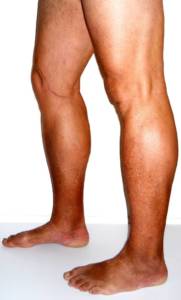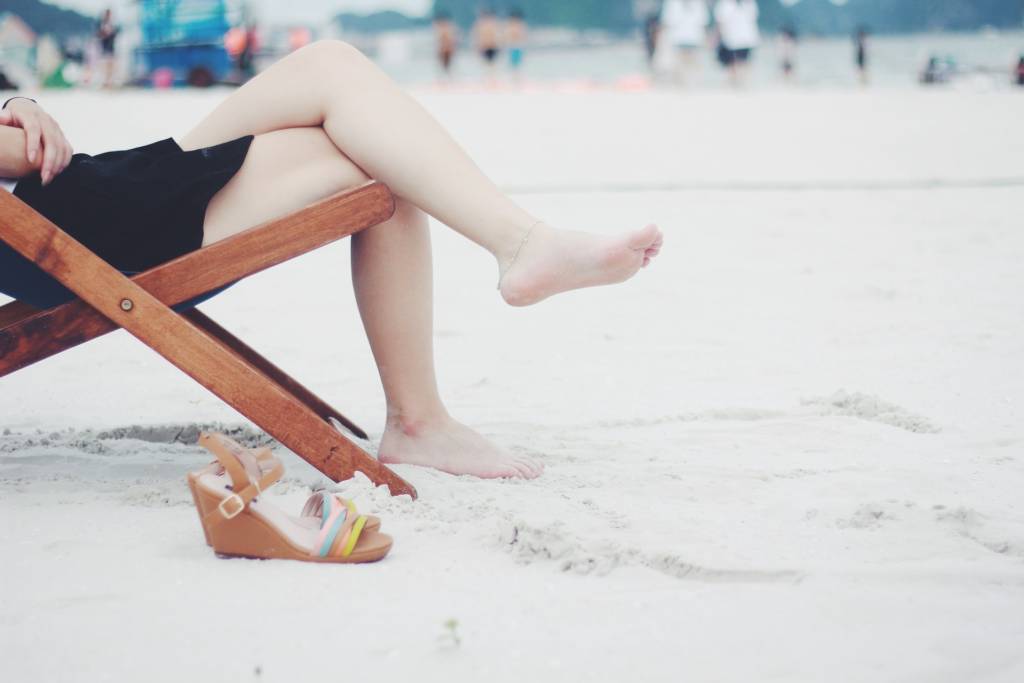Uncategorized
Varicose Vein Treatment: Not Just for Good Looking Legs?
Varicose veins are very common in Western society and studies suggest that varicose veins and spider veins can affect an estimated 60% of the female population and 40% of the male population. Women tend to seek out treatment for varicose veins especially spider vein treatment more frequently than men. In the majority of cases, the initial concern is cosmetic. In fact, at the Palisades Vein Center, over 80% of our initial consultations are performed for patients who are concerned with the appearance of their varicose and spider veins. As a general rule, varicose veins and spider veins are more of a cosmetic issue and pain issue than a dangerous health issue. However, in some cases, long-standing untreated varicose and spider veins can lead to more significant leg health.
Developing Chronic Venus Insufficiency
A percentage of patients with untreated varicose veins can go on to develop chronic venous insufficiency. Some reports suggest that this can occur in 25% of women and approximately 15% of men. To understand chronic venous insufficiency, we need to understand what causes varicose veins and spider veins. Normal veins have one-way valves that direct blood out of the leg to the heart. These valves can become damaged allowing blood to leak back down to the leg causing pressure in your veins. Damaged valves can be an inherited condition; they may also come from blood clots, pregnancy or prolonged standing. This increased pressure makes these veins stretch leading to unsightly varicose veins and spider veins. In addition to becoming visible, these pressurized veins can cause the leg to ache or throb. This is when many patients most often seek treatment. In many cases, the treatment may be non-surgical and include life-style changes and compression hose. Some patients may opt for more definitive vein treatment, which may include endovenous ablation and/or ambulatory phlebectomy for larger varicose veins and sclerotherapy for spider veins.
what causes varicose veins and spider veins. Normal veins have one-way valves that direct blood out of the leg to the heart. These valves can become damaged allowing blood to leak back down to the leg causing pressure in your veins. Damaged valves can be an inherited condition; they may also come from blood clots, pregnancy or prolonged standing. This increased pressure makes these veins stretch leading to unsightly varicose veins and spider veins. In addition to becoming visible, these pressurized veins can cause the leg to ache or throb. This is when many patients most often seek treatment. In many cases, the treatment may be non-surgical and include life-style changes and compression hose. Some patients may opt for more definitive vein treatment, which may include endovenous ablation and/or ambulatory phlebectomy for larger varicose veins and sclerotherapy for spider veins.
Many patients opt to avoid varicose vein evaluation or treatment. This may be due to time constraints or the perceived financial concerns of varicose vein treatment. Today, the insurance issue should be of little concern because most insurance companies deem venous disease a medical issue and cover the cost of indicated varicose vein treatment. In many cases, no varicose vein treatment may be fine as varicose veins rarely lead to any dangerous problems. However, in some patients this prolonged pressure can cause chronic venous insufficiency.
Symptoms of Chronic Venous Insufficiency
Chronic venous insufficiency can lead to permanent damage to the skin of the leg. This condition develops when long-standing venous pressure causes fluid to leak from the veins leading to leg swelling. Eventually, this leaked fluid damages small blood vessels, which supply the skin. The circulation to the skin becomes impeded and over time and the skin becomes damaged causing thickening of the skin. This condition is called lipodermatosclerosis. As the pressure in the vein continues, this damaged skin can break down causing wound (or ulcer). Ulcers on the skin can be difficult to treat and although they are not limb-threatening problems, it could take months of wound care in addition to vein treatment. Thankfully this only occurs in a small percentage of the cases.
So the next time you are considering varicose vein treatment in NYC, New York, and New Jersey for unsightly or painful varicose veins or spider veins remember; you are also preventing the chance of developing chronic venous insufficiency.

